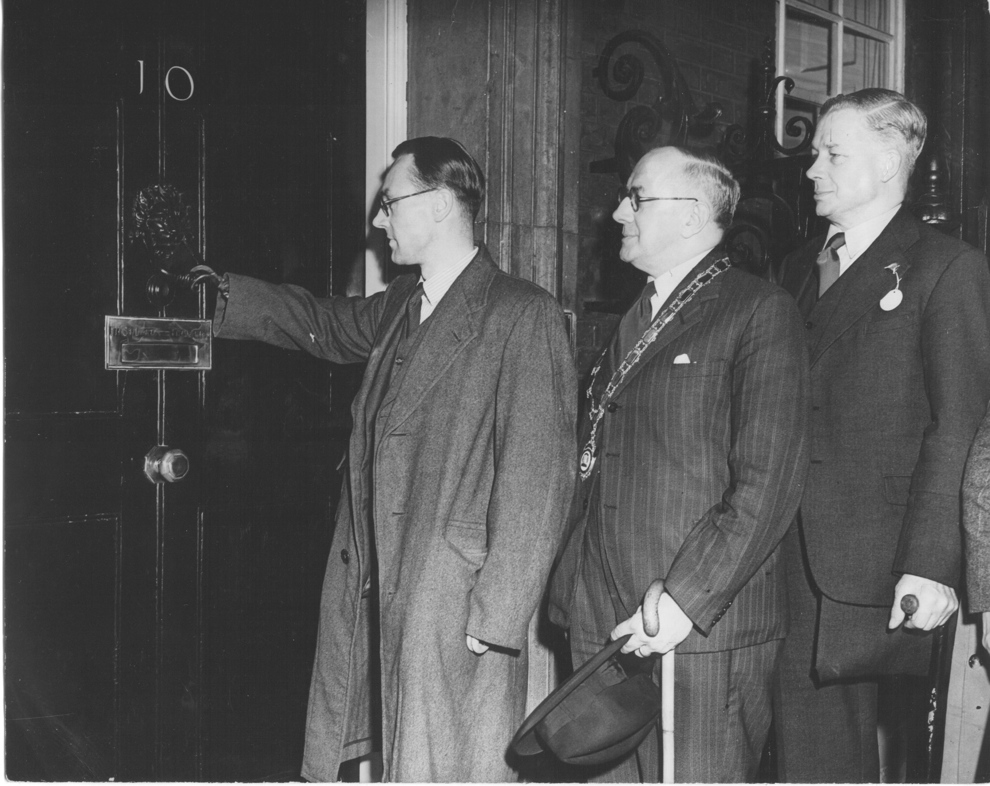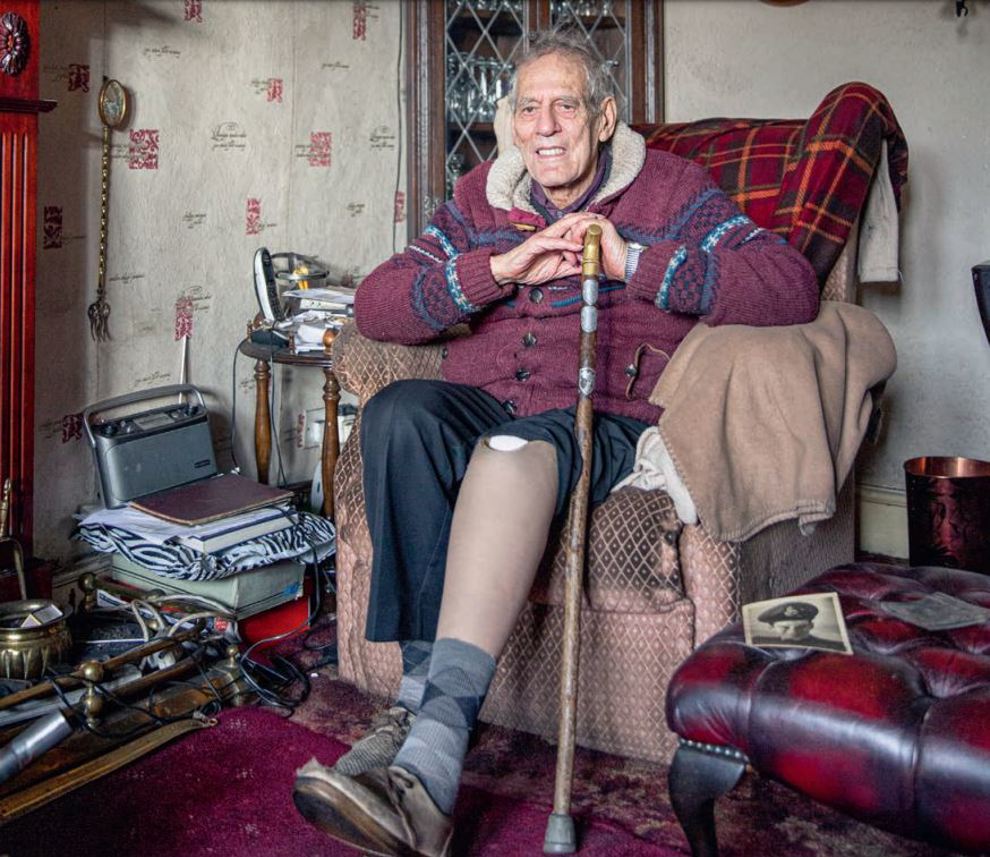Back in 1932 a new house would set you back in the region of £750, while some properties in central London were on the market for £95. At that time you’d have to pay three pence for a pint of bitter and about the same for a loaf of bread – it’s fair to say that life was very different in 1932.
But one element has remained constant: the need for an association to champion the welfare of limbless veterans.
The origins of Blesma stretch back to the aftermath of WWI, when more than 40,000 British Service personnel returned home with lost or damaged limbs. With pinned-up trouser legs or jacket sleeves, opportunities for employment, housing, grants and pensions became yet another minefield to negotiate.
They didn’t retreat though. They fought again, supporting each other as Branches of limbless ex-Servicemen formed to offer campaigning muscle and camaraderie. This loose alliance, meeting in church and village halls or in rooms above pubs, stood up to bureaucracy, official indifference and injustice to make veterans’ lives more equitable and to further the rights of all people living with disabilities.
Making it official
But a national voice was needed and, in 1932, Blesma was granted charity status and held its first conference in Manchester.
These were tough times: the nation was grinding through an economic depression that saw trade fall by 50 per cent and, in the summer of 1932, unemployment hit 3.5 million. The suffering was acute for limbless veterans who, 14 years after the end of WWI, were still struggling to receive full war pensions or access aids that would make it easier for them to live and work.
“It is important that the Association recognises the significance of 1932. It is not the only date in our history, as the seeds were sewn immediately after WWI, but it is a critical point when the movement became a national association,” says Jon Bryant, Blesma’s Chief Executive.
“Blesma began life as a collection of local Branches where Members provided mutual support. We do that now but on a national level, working for and campaigning on behalf of Members. There have been huge changes in society since Blesma’s early days but our efforts on behalf of Members continue, along with our mission to keep them in
touch with each other for mutual support.”
Blesma has scored notable success, both in helping individual Members and leading campaigns to improve a range of advances from war pensions to prosthetics provision.
“Our advocacy is results based and there will be occasions when we campaign on a large scale and other times when we engage more quietly,” adds Jon.
“But we always perform this as an association respected for its expertise and judgement, and for its understanding of Members’ needs.
“No one size fits all and the Board of Trustees considers very carefully what we should do and when so we can make
the best case for Members.”
A landmark example was in 1955 when former Corporal Jim Toft, who lost both hands and damaged his legs when his tank was hit during WWII in Italy, raised the door knocker of No. 10 Downing Street with his split hook prosthetic to deliver a proposition supporting better war disability pensions.

Fast forward to more recent times and Blesma led the evidence-based campaign that made microprocessor knees available for Members which, subsequently, created wider access to the technology for the general public. Much of Blesma’s work takes place away from the spotlight with its expertise deployed to improve benefits, pensions and grants, challenge unfair decisions, secure the latest technology and to shape future policy.
“The input of our Members is critical to everything we do,” says Jon. “They range in age from 20 to 100, so our Members have a wide variety of needs and it is a joy to interact with them, understand their experiences and to help them.
“The great thing about Blesma is that it brings people together and all the Members support each other. We have octogenarians sharing advice and experiences with veterans who are 40 years their junior.
“Blesma has been through an evolution since 1932 – indeed, it is evolving all the time. Despite significant advances, disabled people still face major challenges in society. But nothing has changed in regard to our steadfast commitment to them. Blesma is here for life.
“We can be proud of what Blesma and its Members have achieved over the past 90 years, but we are now focusing on the challenges and needs of the present and the future.”

Tony Whitaker, an ex-pilot, lives in a Derbyshire village. He shares his birth year with the Association.
Tony was a youngster when World War II began and he went on to serve in the RAF – losing a leg following a plane crash. He took time to tell us about his life, service, and how the Association has been there for him…

What was life like growing up in the 1930s and through WWII?
It was very different from nowadays! We had electricity but only for lights. We had no power point , we only had cold running water, heating came from a coal-fed range, and we had a tin bath on the wall for a
weekly wash. There were hardly any cars around so, when it was snowy, you could sledge down the main street from one end of the village to the other.
My father was killed in a work accident when I was 14 months old and we lost our sister in a motorbike accident, so mum had it tough.
You were seven years old when World War II was declared…
I clearly remember listening to the announcement on the wireless. We had just sat down for Sunday lunch. I was quite excited about it because I’d seen war films at the pictures and thought it would be a great adventure. At that age I had no concept of what it would actually involve.
I do remember, though, that men from the village went to war but didn’t return.
When did you sign up?
It was after I left school. I’d always been interested in the Navy and went to the recruiting office in Sheffield to sign up. They turned me away so I joined the RAF instead and did six months ground training on the Isle of Man. My service was almost cut short after my first leave when a train accident meant I missed the ferry from Liverpool.
You daren’t be late back from leave so I had no option but to get a plane across. It cost me every penny I had, but I got back in time!
What are your memories of your first flights?
I was based at RAF Cottesmore in Rutland and was flying single-engine Harvards, which were very difficult as you had to point the nose up and that restricted your vision. I remember once almost getting wiped out by another Harvard that was coming the other way as we couldn’t see each other very well – we must have only missed each other by about 10 feet!
There were accidents and we lost three colleagues during training; one was a 22 year old who was married with children. It was tragic.
After a while I moved on to fly Gloster Meteor jets. I was enjoying life and couldn’t imagine doing anything else.
What happened in your accident?
I was flying in poor visibility and we couldn’t find the landing strip. We were running out of fuel so had to bail out. The navigator got out ok but I must have got dragged along the aircraft after catching my foot as I went out of the cockpit. I landed in a tree and fortunately the parachute harness created a tourniquet which stopped me bleeding
out from my injured foot.
They had a devil to get me down as I was 70 feet up and the ground was all boggy so they couldn’t get a fire engine close. They eventually managed it by strapping ladders together.
What happened after that?
I was taken to a hospital in York and it was touch and go for a while. I can’t remember anything about the accident. When someone who I thought was my girlfriend visited, I noticed she looked a bit different and so I asked her if she was having a baby. She said yes so I then asked: ‘Well, are we going to get married then?’ and she said: ‘We are
married!’ My memory was shocking for a while.
Even today, I still can’t remember the crash, which resulted in me having a below-knee amputation of my left leg.
What did you do after service?
I was treated at Headley Court before being invalided out. I then went to work for a brake company, so my time in the RAF was sadly all too brief.
When did you join Blesma?
It was when I was about 40. I’d not had any need for help but the charity always made sure any monies due to us veterans got through. The Association has since helped me financially and I’ve been to Mount Snowdon and to Lincolnshire with other Members. It is a very effective association that does amazing things.
We can help
We are dedicated to assisting serving and ex-Service men and women who have suffered life-changing limb loss or the use of a limb, an eye or sight. We support these men and women in their communities throughout the UK. Click the link below to find out the different kinds of support we offer.
Get Support
Leave a comment
Join fellow Members and supporters to exchange information, advice and tips. Before commenting please read our terms of use for commenting on articles.